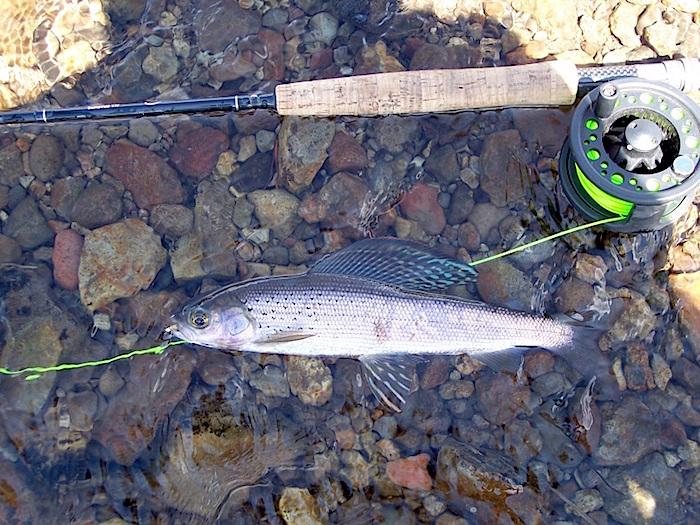
Restoration work is returning both Arctic grayling (shown here) and Westslope cutthroat trout to Grayling Creek in Yellowstone National Park/NPS
A creek in northwestern Yellowstone National Park is regaining its namesake fish, the Arctic grayling.
A restoration project in Grayling Creek this spring has seen nearly 100,000 grayling eggs hatched in the creek, and native Westslope cutthroat trout also are being restored to the creek in the form of nearly 700 fish and more than 10,000 eggs this year alone.
Such introductions are planned to continue to at least three years as fisheries biologists work to develop self-sustaining populations of the species in the creek.
The Arctic grayling and Westslope cutthroat introductions are part of a concerted effort to restore a native fish community to the large, remote Grayling Creek watershed. The Madison River and its tributaries including Grayling Creek in the park once held the southernmost population of fluvial Arctic grayling, a beautiful fish known for its large dorsal fin and iridescent color. Scientists in the 1890s described the fluvial Arctic grayling population as abundant, but by the 1950s, the grayling—one of 11 native fish to Yellowstone—was virtually extirpated. Also, only one aboriginal population of genetically-unaltered Westslope cutthroat trout remained in the park.
Crews from the National Park Service, Montana Fish, Wildlife and Parks, U.S. Fish & Wildlife Service, U.S. Forest Service and Turner Enterprises have worked in partnership for nearly a decade to create a large secure refuge with 35 miles of stream habitat within the Grayling Creek watershed.
In 2012, a natural waterfall was modified to create a barrier that prevents nonnative brown and rainbow trout from invading the restoration area from downstream sources. In 2013 and 2014 interagency crews treated the proposed restoration area with rotenone, an EPA-approved pesticide that targets fish, to remove all nonnative and hybridized trout. These treatments proved successful, as no brown or rainbow trout have since been found in Grayling Creek.
The primary source of fluvial Arctic grayling eggs is Axolotl Lake, a small lake near Ennis, Montana, where hundreds of Big Hole River strain grayling are held as a source for eggs. Montana FWP’s Big Timber Hatchery oversees egg collection and rears them until they are ready to stock in the wild. Westslope cutthroat trout eggs being reintroduced to Grayling Creek are held at a small egg rearing facility at the Sun Ranch in the Madison River Valley. The eggs are collected from wild sources and brought to the Sun Ranch where they are reared until they are almost ready to hatch. Biologists then stock them into the wild.
“Fluvial Arctic grayling and westslope cutthroat trout are being returned to the waters of Yellowstone National Park,” said Todd Koel, leader of the park’s Native Fish Conservation Program. “Support by our agency and non-governmental organization partners, as well as funding through donations to the Yellowstone Park Foundation are the reasons this large restoration effort has been successful.”



Add comment